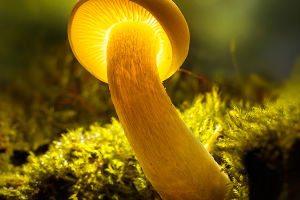As spring graces the Netherlands with its vibrant blooms, the iconic tulips take center stage, adorning fields and markets alike.
These blossoms, synonymous with Dutch culture, hold a rich history beyond their aesthetic appeal.
The early 17th century witnessed an unprecedented phenomenon known as the "Tulip Mania," where the humble tulip shook the foundations of Dutch society.
Contrary to popular belief, the journey of tulips to Europe traces back to the Ottoman Turkish Empire (1299-1922). In Turkish, the term "lale" is used to extol the beauty of young maidens, reflecting the flower's cultural significance beyond borders.
The narrative of Dutch tulips finds its roots in the endeavors of Carolus Clusius, a botanist at the University of Leiden. For nearly two decades, Clusius meticulously cultivated tulips in his Viennese garden, culminating in the publication of his seminal work on tulips.
His passion and expertise attracted attention, leading to his appointment as the director of the newly established Hortus Botanicus at Leiden University in 1593.
Under Clusius's stewardship, the Hortus Botanicus transformed into a hub of tulip education, marking the inception of the Dutch tulip industry. However, success bred envy, and Clusius's garden became a target for flower thieves eager to procure the coveted blooms.
The late 16th and early 17th centuries heralded the golden age of tulips in the Netherlands, coinciding with the nation's newfound prosperity following the bourgeois revolution.
With newfound affluence, tulips transcended their status as mere decorative flowers to become symbols of wealth and prestige. The burgeoning fascination with tulips prompted both aristocrats and merchants to indulge in collecting exotic varieties, akin to amassing prized artworks.
The pinnacle of tulip mania manifested in the astronomical prices fetched by rare specimens. The "eternal Augustus," a coveted tulip variety, commanded exorbitant sums, with prices exceeding 1,000 guilders by the end of 1634. Such rarities were scarce, fueling frenzied speculation and inflating tulip values to unprecedented heights.
As capital flowed into the Netherlands from across Europe, tulip trading emerged as a lucrative venture, drawing enthusiasts and investors alike. The allure of quick riches propelled the market into a frenzy, reminiscent of modern-day speculative bubbles.
However, tulip trading posed unique challenges, notably the absence of tangible assets. Traders engaged in speculative transactions without physical tulip bulbs, leading to the term "trading in the wind." To navigate this speculative landscape, tulip charts emerged as indispensable tools, providing insights into bulb varieties and their potential yields.
Despite its eventual collapse, the Tulip Mania left an indelible mark on Dutch society, shaping economic discourse and cultural perceptions. While the frenzy subsided, tulips retained their status as enduring symbols of beauty and resilience.
In retrospect, the Dutch Tulip Mania serves as a cautionary tale against unchecked speculation and the allure of quick riches. Yet, amidst the chaos, the tulip endures, a testament to nature's enduring splendor and humanity's penchant for beauty and intrigue.
As tulips once again grace Dutch landscapes, their vibrant hues serve as reminders of a bygone era, where beauty, passion, and speculation intertwined to captivate an entire nation.


